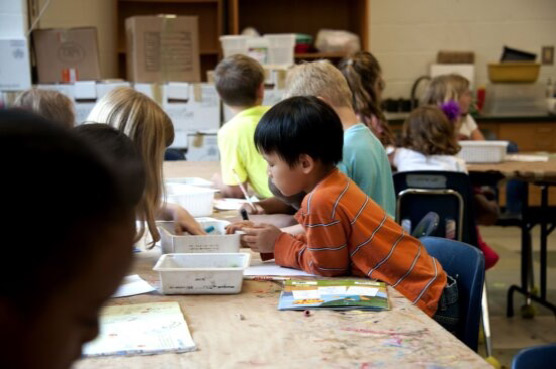Grade Level: 3
Content area: English Language Arts
Standard identifiers: RL3.3; RL 3.7; RL 3.10; L3.3
Objectives: Students will:
- Read and comprehend a cultural story
- Show comprehension through illustrating appropriate drawings that reflect what is happening in the story
- Compare the difference in the oral story and the written story
Materials and Resources:
Assessment (informal):
Students who comprehend the story will illustrate relevant drawings that reflect the portion of the story that is on the page and be able to explain how the illustrations contribute to what is being conveyed by the words in the story.
Strategies for English Language Learners and Learners with Special Needs:
- Use the accompanying PowerPoint to introduce key vocabulary before listening to and reading the story.
- Students can work in groups to help each other decode the story.
Instructional Sequence:
Introduction and explanation to students about the purpose of the lesson (5 minutes)
- Storytelling is a very important part of the Chumash culture. They have an oral tradition, meaning they didn’t have a written language and relied on people repeating stories to share information from generation to generation. Being a storyteller is an art and an honor. The story we will listen to and read today tells us about how the Chumash people came from the Channel Islands to the mainland.
Teacher modeling (4 minutes)
- Listen to Julie Tumamait-Stenslie tell the Chumash origin story, Rainbow Bridge Chumash Story: The Rainbow Bridge
Guided practice (5 minutes)
- Especially for ELLs, introduce the vocabulary that they will read in the Illustration Activity. Use the PowerPoint which shows pictures of the meaning of key words. Vocabulary for Rainbow Bridge
- You can also display the story and read it aloud. This would also be a good way to go over the directions and have students think about what the story is saying part by part and how they visualize the story.
Practice (independent, partner, or group) (time will vary depending on number of pages students illustrate)
- Students can work independently, with partners, or in groups. If students are working independently, they can either illustrate the entire story (1 booklet for each student; can be printed 2 pages per sheet to save paper) or take part of the story and the booklet can be combined. Students can work in pairs to decipher the text and collaborate on what to draw for a whole booklet or part of a story. The general directions are:
- Students will read the part of the story on the page and draw a picture to show what is happening at that part of the story.
Closure (10 minutes)
- Class discussion questions:
- How would you describe Hutash’s character? How did her traits contribute to what happened in the story? (She was annoyed, so she sent the people to the mainland; she was kind so she transformed the people to dolphins)
- What was different about hearing the story and reading it? (In the oral story, Julie says “and,” “well,” (conversational markers) much more. Periods are used in the written version to show a new sentence. Words are repeated for emphasis. She uses intonation and pauses. Students can also reflect on which format they connected to the story more. Some students may have stronger aural comprehension skills, others may have stronger reading comprehension skills.)
- What is your favorite part of the story? Why?
Monitoring for student learning/understanding:
- If you choose to read the story as a class, pause and ask the students to think about what they see when they hear that part of the story and describe their visions. Ask students to put the story in their own words.
- Observe the students as they complete the activity.
Reflection after the lesson:
- Are your students stronger auditory or visual learners?
- What words were difficult for students? What made those words difficult? (comprehension/vocabulary or reading?)
Take reflection notes on how the lesson went for your future reference.


